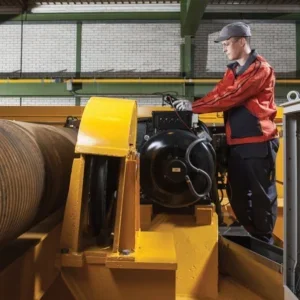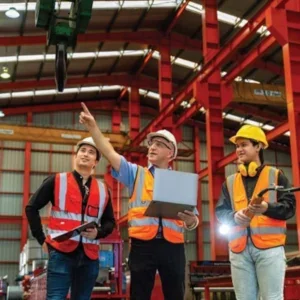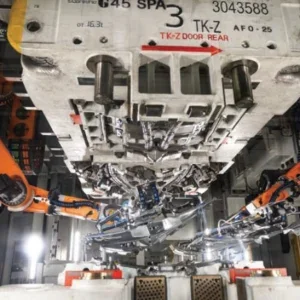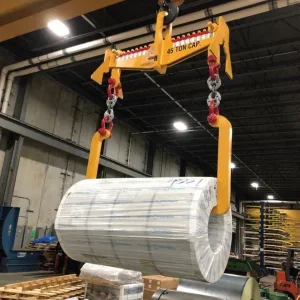After a decade of rapid growth India’s economy has staggered from crisis to crisis. Both local and overseas investors have become wary, frustrated by stalled reforms, huge corruption scandals and bureaucratic inaction. Foreign direct investment, in the first quarter of 2012, was down by 67% compared with last year. The rupee has slumped, a current-account deficit looms and inflation, though it has dipped slightly, remains high. However, there are signs that the world’s fourth largest economy is preparing to stage a come-back.
Following the slowdown induced by the global financial crisis in 2008-09, the Indian economy responded strongly to fiscal and monetary stimulus and achieved a growth rate of 8.6 per cent and 9.3 per cent respectively in 2009-10 and 2010-11. And, according to insiders, the halo effect looks likely to spur renewed growth in the nation’s crane industry. Hoist Magazine talks to S. C. Bhatia, Managing Director of Safex Electromech.
Q: How has the recent economic uncertainty affected the crane industry in Asia?
A: While the effects of the global economic slowdown are comparatively less in India, there are changes seen in the crane industry. The most apparent effect is the pace at which new projects are being commissioned. Businesses are moving ahead cautiously with regards to expansion plans and new ventures. The result is that some projects are being put on hold after complete planning or are moving slowly. Financial cycles in terms of project financing, purchasing and payments are also getting delayed.
However, the Indian economy is on a strong foothold. India’s trillion dollar economy with a steady GDP growth and heavy foreign direct investment (about USD 17 billion between April 2010 and January 2011) provides a favourable business climate. With a fair growth rate and development potential intact, the crane industry in India is expected to grow at a steady pace. Several international crane manufacturers including Kone, Demag, Abus and Street are also attracted by the market potential that India presents.
Q: How has government contributed to this uncertainty?
A: Policy decisions including the boosting of foreign investment, increased spending in infrastructure (over USD 1.2 trillion in 2012-2017), power, and defence sectors are aimed at mitigating the recent slowdown. In addition, government introduces measures such as tax benefits, special land pricing in underdeveloped areas, and Special Economic Zones for export market to boost local economy.
Safex Electromech has manufacturing division in Ahmedabad in the state of Gujarat, which is a major contributor to the Indian economy. Gujarat has seen an average annual growth rate of 10.4% in the last five years, and it benefits from a proactive business friendly government. Currently, 12 Special Investment Regions of more than 100 sq. km. each are being planned. In addition, a new petrochemical and petroleum investment region, 60 special economic zones and existing 200 industrial areas ensure opportunities across sectors.
Q: What, in your opinion, has been the most significant development in the Asian crane industry over the past 12 months?
A: Significant development over the past year is seen in terms of innovation in products with better performance and competitive prices with customized equipment.
Along with this, a growing awareness about energy consumption is resulting in small and large companies demanding energy efficiency in material handling equipment. This is even more important in project orders, where efficient equipment can result in significant running cost savings.
Q: Where do you see the best signs of growth for the industry?
A: Given the government’s commitment towards national infrastructure, the crane industry will see a growth in demand from allied sectors such as iron and steel, construction materials, etc. Power, defence and automobile sectors in India are also expected to boost demand for material handling equipment. New projects and industrial development is seen in power, petrochemical, pharmaceutical, chemicals, fertilizers, ports and steel industries. Growth in engineering sector appears slower.
In Gujarat, major investments are planned in the ports, water supply and automobile sectors. This, along with substantial growth across existing industries in the state will generate a steady requirement for industrial cranes.
Gujarat has more than 800 large industries and over 370,000 micro, small and medium industries. The state has the world’s largest gas-based single location sponge iron plant, world’s 3rd largest grassroot petroleum refinery (at Jamnagar), and India’s first LNG chemical port terminal (at Hazira).
Q: What technology in the crane industry are we likely to see more of in the years to come?
A: Continuous improvement in lifting equipment in terms of design efficiency, energy consumption, noise reduction, safety and lighter weight will be pursued. With growing availability of superior domestic as well as imported electro-mechanical components, many enhancements in material lifting systems are to be expected.
Increased use of computerized systems in cranes and hoists is also likely to be seen in the coming years. An example is the use of digital data recorders that capture the loading and operating patterns of the crane. This recorded data helps in resolving any breakdown or service issues with minimal down-time. Same can be likened with modern cars with inbuilt computers which mechanics can connect to and read to diagnose any problems without even looking under the hood.
Q: What are the challenges facing the crane industry in Asia (or India in particular) and how can they be overcome?
A: Preventing the global growth slowdown from negatively impacting the Asian and Indian economic growth is the most significant challenge. While India in particular hasn’t gone through as significant a slowdown, industry sentiment on future growth is constrained, which has led to some uncertainty in project execution.
As project teams try to tighten their budgets for new projects or expansion plans, and as crane costs form a major portion of project capital expense, the pressure falls to crane manufacturers for lower prices. In addition, there is stiff competition due to global crane manufacturers who are looking to strengthen their position in the local market and the existing big and small domestic companies struggling to maintain and grow their market share. This is not a purely short term trend as the Indian crane market is now completely changed.
Crane manufacturers have tried to compensate through increasing visibility and offering considerably lower prices in an effort to win orders. The current market will prove beneficial to those manufacturers that are better able to rein in long term cost escalations. Differentiation will also play a key role in the industry. Those companies that are able to target their products to better suit various (process) verticals should see better growth and profitability.
Q: How optimistic or pessimistic are you for 2014 and why?
A: 2014 should see much better growth in the crane segment as the government is actively addressing lingering policy issues that negatively impacted growth over the past 2 years. This should result in a relative shift away from the recent industrial focus on risk aversion and an increase in credit availability. Once this happens (and it has already started) the underlying demographics of the Indian market should see growth hit pre-2008 levels. Given the government’s focus on infrastructure we believe crane manufacturing will significantly outperform the economy in general.
With key industrial sectors targeted for growth nationally and specialized subsectors focussed for rapid growth in Gujarat, we at Safex Electromech are highly optimistic for a strong and growing demand for our products in the coming years. We are expecting about 20 percent growth in sales in the next financial year and are gearing up by streamlining our production systems and introducing new product lines.
Q: What has been your most significant achievement in recent years?
A: Safety, efficiency and advanced technology in our products have always played key roles in the success of Safex Electromech products. Our focus on design and constant innovation has helped us offer customized products that meet a varied need for lifting equipment. Adhering to design standards is one thing, but providing equipment that has a long operating life with minimal maintenance costs needs special considerations. Safex Electromech products are specifically designed considering the operating condition, atmosphere and usage of each equipment.
Q: Please tell us of any new developments at Safex Electromech that you would like our readers to know about.
A: Safex Electromech is an independent family owned business with a strong focus on engineering excellence. As Managing Director, I bring to the company over 40 years of design and development experience from several engineering sectors including automobile, textiles, plastic processing machinery and material handling equipment.
Over the past year we have expanded our R&D activities, streamlined our operations and boosted quality control. Last year we supplied first products from a new range of compact, higher efficiency electric wire rope hoists to ABB. Recently we also introduced several specialized products with compact design and higher lifting heights.






